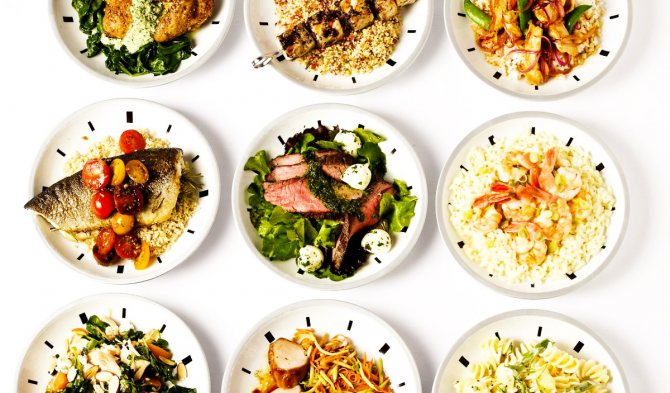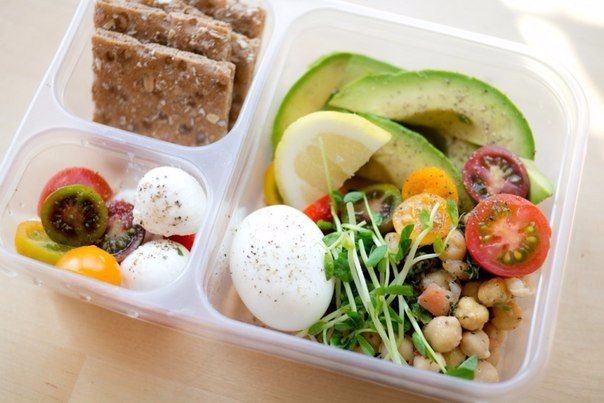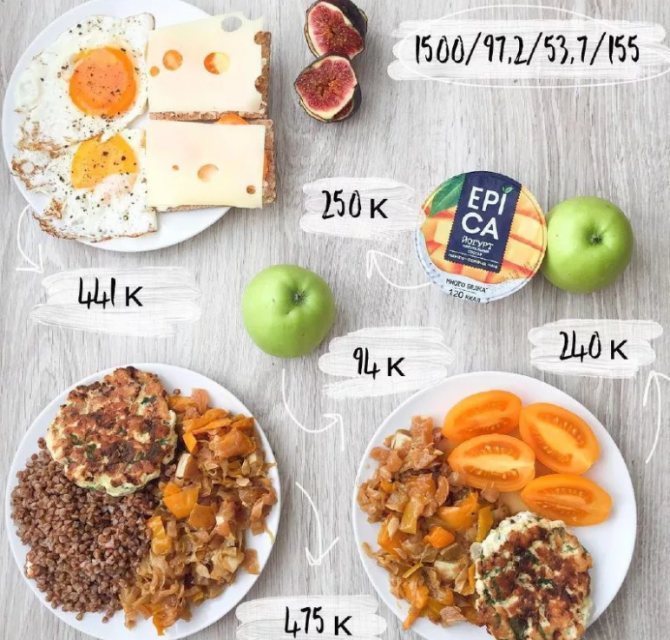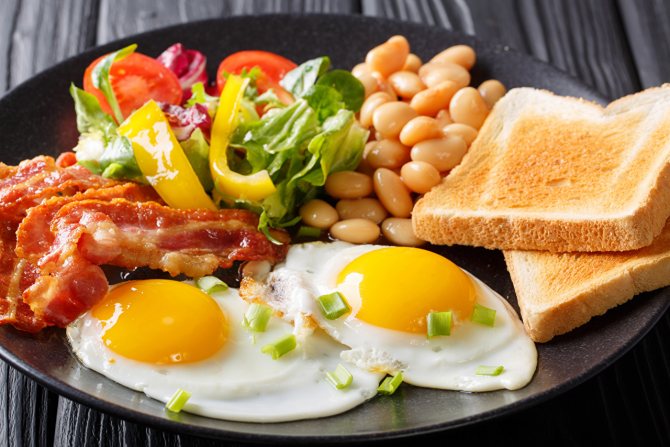Benefits of Intermittent Fasting 23:1
People who follow the one-meal-a-day diet find it provides many benefits, including:
- a person loses weight quickly;
- the diet is easy to follow because there is no need to count calories;
- no food is off limits.
Researchers suggest that intermittent fasting may help people lose weight, although they warn of numerous risks, such as increased body fat.
In one study, researchers focused on a one-meal-a-day diet. Participants in this study consumed daily calories during a 4-hour window in the evening. Many experienced a decrease in fat mass and body weight, while others had increased cholesterol and blood pressure.
Other researchers concluded that daytime fasting was no more effective than a calorie-restricted diet in terms of weight loss, cardiovascular risk, or ability to stick to the diet.
Intermittent Fasting Research:
- Short-term fasting
, in which people eat within 4 to 8 hours, can reduce blood sugar and weight in people with type 2 diabetes. - Fasting 15 hours a day
for a month can benefit a person's overall health and improve the body's cells' ability to resist disease. - Eating within an 8-hour
window or shorter triggers autophagy, which is a process the body uses to clear out damaged material, according to a 2021 study. This will help in the prevention and treatment of many age-related chronic diseases.
However, many of these studies did not specifically look at the one-meal-a-day option.
How many grams of food to eat when losing weight
Portion rate
How to calculate the number of grams per person per day
In order to find out the daily food weight necessary for the normal functioning of the body and getting rid of extra pounds, you need to perform the following calculations:
Calculate the daily kilocalorie requirement (DK) required by the body. To determine the value of this norm for men and women, the Mifflin-San Geor formula is used:
DNA for males = (9.99×M) + (6.25×H) + (4.92×Age) + 5;
DNA for women = (9.99×M) + (6.25×H) + (4.92×Age) – 161,
Where:
- M – body weight, kg;
- H – height, cm;
- Age – age, full years.
Multiply the resulting daily calorie intake by the correction factor (Ka), which takes into account the degree of human activity.
Correction factor Ka taking into account human activity
| Activity level | Correction factor, Ka |
| Sedentary work, inactive lifestyle | 1,2 |
| Light physical activity (daily exercise, walking 2-3 times a week) | 1,4 |
| Regular training (2-3 times a week), active lifestyle | 1,6 |
| Active sports (daily workouts), heavy physical activity at work | 2 |
- Reduce the resulting value by 10-20% - by reducing the daily requirement of kilocalories by only 10-20%, a person does not cause much damage to his body and provokes him to lose weight and gradually lose extra pounds. To calculate the amount of daily kilocalories required for weight loss (DNA for weight loss), the value obtained as a result of the two points above is multiplied by 0.9-0.8.
- The resulting kilocalorie values must be divided into 4-5 meals, taking into account the prepared diet and the energy value of the foods included in it, and calculate their weight for each meal.
Calculation example

Calculation required
Initial data:
- The subject is a 35-year-old woman weighing 70 kg and height 165 cm (1.65 m), leading a sedentary lifestyle (office worker).
- The optimal BMI is the body mass index, equal to the ratio of a person’s weight to the square of his height, for women of a given age is 22.95.
Calculation:
Using the value of the optimal BMI (22.95), normal weight (Mnorm) is calculated for this age and height:
Mnorm = BMInorm.× Height2 = 22.95 × (1.65 × 1.65) = 62 kg.
On a note. Accordingly, the excess weight value is 70-62 = 8 kg.
The daily calorie requirement (DNA), calculated using the Mifflin-San Geor formula, taking into account the coefficient taking into account human activity (Ka), for such a woman will be equal to:
DNA=((9.99×70)+(6.25×165)+(4.92×35)-161) × 1.2=2090 kcal.
- To lose weight without harm, such a woman needs to reduce her calorie intake by 20% per day. Accordingly, the daily calorie intake for weight loss (DNA for weight loss) for her will be 2090 × 0.8 = 1672 Kcal;
- If we divide this daily norm into 5 meals, it turns out that at one time this woman can eat foods with a total energy value of 334 Kcal. So, with this calculation, breakfast should consist of 150 g of low-fat cottage cheese (234 Kcal), green tea without sugar (0 Kcal) and 2 large oranges weighing 250-300 g. (approximately 100 Kcal). Thus, a single portion consumed for breakfast in grams for weight loss will weigh only 400-450 grams.
- Daily consumption of the above-mentioned amount of kilocalories and following a diet will allow you to get rid of extra 8 kg in 1.5-2 months, with a healthy loss of 150-200 g of excess weight per day.
This simple method of calculating the amount of food without going to specialists will allow you to independently calculate how many grams you need to eat in order to lose weight and not “make money” as a result of unnecessary illnesses in the form of digestive disorders and too much weight loss below the permissible value.
Important! To lose weight, you need a properly formulated diet, not starvation. With a complete refusal of food, the body, contrary to the expectations of many, does not burn excess fat, but primarily depletes muscle tissue
This leads to disruption of many functions of the gastrointestinal tract, causes a decrease in the strength of bone and cartilage tissue, and in the most advanced cases contributes to the development of dystrophy and growth retardation.
Experiment
Scientists from American University conducted an experiment on assessing the weight of food by eye.
Two groups of subjects took part in it: doctors and people far from medicine. As a result, it was determined that, regardless of education, the difference in the estimate of the number of grams on a plate compared to the actual one ranged from 22 to 48%. This means that a person cannot always determine by eye the size of the portion in grams that he is going to eat. From this it turns out that calculating the number of kilocalories (a fairly popular method for losing weight) is not always adequate and corresponds to what is actually eaten. Be that as it may, it is not always possible to weigh food on a kitchen scale. The solution to this problem turned out to be simple.
What is fractional nutrition?
The meaning of fractional meals is that you need to eat 5-6 times a day in small portions (the more frequent the meals, the smaller the portions). But with a prerequisite: your daily caloric intake should be divided between these meals.
This means that you will not eat as much vegetable salad or fruit as your heart desires, no! After all, in one meal you can eat half, or even the entire daily ration, and then 5 more meals (after all, we have fractional meals six times a day) and justified indignation as to why the process of losing weight stands still.
How to calculate your calorie intake based on your workouts?
Fractional meals when losing weight should be based on your honesty with yourself. If you have already decided to adhere to such a food system, then take care to purchase small dishes and small kitchen scales; this equipment will always serve you faithfully in the kitchen.
Eating before bed

Despite the fact that it is strictly not recommended to eat in the evening, if you still want to snack on something, it could be the following foods:
- So, half an hour before bedtime you can drink 200-300 ml of kefir. This meal will not harm your body at all, but on the contrary will help speed up your metabolism. This once again confirms the fact that it doesn’t matter at all what or how much a person should eat, but another nuance is what he eats and at what time of day this happens;
- You can also eat a few raw eggs or drink milk an hour or two before bed. This snack also won't leave many extra calories in your body;
- If you decide to go on a vegetable diet, then snacks such as carrots or cucumbers will not harm your digestive system.
In addition, you can choose any diet, but you must correctly calculate both your strength and the body’s resources. But, no matter what diet you choose, nutritionists recommend drinking plenty of water throughout the day. But, before going to bed, the amount of water should also be significantly reduced.
How many times a day to eat: Does meal frequency affect your body?
Over the past few years, researchers have been looking into the effects of meal frequency. Here are the results of some of the most interesting ones.
Some early human studies, published about 50 years ago, assessed the effects of meal frequency on weight and body composition. In some experiments, a similar connection was discovered. Others refute the effect of increasing the number of meals on weight and body composition.
Some studies show an inverse relationship between food frequency and body composition/weight – i.e. the more meals you eat, the less you weigh (all other things being equal - for example, with the same number of calories). However, these data are questioned: in addition to the obvious genetic differences of the subjects, there are other factors that can influence the results and conclusions.
For example, in experiments that use self-reported data to compare total daily energy expenditure, food intake is often underestimated (We wrote about this case in the text “Why Some People Didn’t Lose Weight on a Calorie Deficit” - where in the study people cheated in 1. 5-2 times). Several studies have found significant underestimation of calories consumed by overweight and obese people, as well as older people, who tend to underestimate what they eat.
The source notes a rather positive effect of eating more frequently on weight and body composition, even taking into account the possibility of underestimating people who restrict food/diet. However, this difference is insignificant and is not confirmed by many other studies.
Confounding factors aside, most studies show that increasing meal frequency does not make a significant difference in weight loss/body composition changes.
How much food do you need?
A doctor says to an obese patient: “You can eat whatever you want,” but here is a list of what you should want.
Today we’ll talk about how to calculate your individual food needs. These needs consist of at least three components: the amount of food consumed (how much?), the ratio of its constituent elements (what?) and the mode of consumption (when?). We’ll talk about routine issues next time, but today we’ll focus on the first two questions (how much and what to eat).
So let's talk about the amount of food. In my opinion, the best answer to the question “how much” is the energy value or calorie content of food. And the first law of proper nutrition sounds like this: it is necessary to match the energy value of the diet with the energy expenditure of a person (that is, to paraphrase the well-known saying, as much as you eat, you need to trample as much).
But counting calories has now become “unfashionable”. Perhaps this is due to the numerous weight loss methods based on calorie counting, which, in addition to psychological techniques, “put” a person on a “very low-calorie diet” of 800-1000 kcal, which most sane people fail in the first couple of months. Perhaps this is also the difficulty of mathematical calculations for the average citizen. In general, today many perceive even the word “calorie content” in a negative way. However, no one has proposed a worthy alternative. Measuring the amount of food in handfuls, cups, grams and ounces does not give us a real answer to the question “how much”, so 100 grams of butter and a similar weight of, for example, cucumbers are very unequal portions, and physical activity cannot be accurately measured in grams ! Therefore, without calling for tedious daily counting of calories, I still suggest learning how to manage them so that you can answer the question “how much food does my body need” for yourself. I immediately foresee an objection like “the body itself knows how much it needs, you just need to learn to listen to it.” And this is exactly true! But for some reason it seems to me that if you know how to masterfully listen to the needs of your body, this topic should not interest you in any way, and if you are, somewhere your perception will fail. Therefore, I suggest that those who are interested start by doing the math.
First. We calculate daily energy expenditure. They consist of: 1.1. Energy expenditure for basal metabolism. Basic metabolism is the energy that your body consumes to support life (breathing, heartbeat, maintaining body temperature, etc.). That is, even if you are lying in bed in completely comfortable conditions, energy will still be consumed. The amount of basal metabolism depends on gender, age, height, weight, degree of muscle development, state of health, and it accounts for approximately 2/3 of the body’s daily energy expenditure. On average, the basal metabolic rate of an adult is approximately 1 kcal. for 1 kg. body weight in 1 hour. The most accurate value of basal metabolism can be measured in a medical institution using the method of indirect calorimetry (measuring the volume and composition of exhaled air). The bioimpedance body composition analyzer, which I already mentioned, is less accurate in determining the level of basal metabolism. But most healthy people don’t have to worry too much and can calculate their basal metabolic rate using one of the formulas, for example:
For men:
18-30 years old: (15.3*weight in kg.)+679 30-60 years old: (11.6*weight in kg.)+879 Over 60 years old: (13.5*weight in kg.)+487
For women:
18-30 years old: (14.7*weight in kg.)+496 30-60 years old: (8.7*weight in kg.)+829 Over 60 years old: (10.5*weight in kg.)+596
And here is another, more universal formula: Harris-Benedict equation for determining the level of basal metabolic rate: BMR = 655 + (9.6 X weight in kilos) + (1.8 X height in cm) - (4.7 X age in years)
1.2 Energy consumption for digestion of food is approximately 10-15 percent of total energy expenditure. The most energy is spent on digesting proteins, complex carbohydrates come in second place, and sweets and fats are digested with minimal energy expenditure.
1.3 Energy expenditure for physical activity. It is clear that any mental and physical activity requires additional energy expenditure. The more intense it is, the more energy is required to implement it.
How to calculate your energy expenditure?
Method one (the most difficult). We keep track of our average working day and a typical day off (for example, I spend 8 hours sleeping, 1 hour on hygiene procedures, 2 hours on cooking and 1 hour on meals, out of 8 hours of working time I spend 4 hours sitting at computer, I spend 2 hours in negotiations with colleagues and 2 hours walking around objects, the road to and from work takes me 40 minutes by car, etc.). We make sure that all 24 hours are scheduled, then using any energy consumption table we find the value for each type of activity and add them together. It is better to calculate on average over several days. There are many ready-made calculators, for example, here https://www.takzdorovo.ru/db/activities/. The figure you got already includes the value of the basal metabolism and the energy for digesting food.
Method two (easier).
With a sedentary lifestyle, we multiply the value of the basal metabolic rate by a factor of 1.1, with a moderately active lifestyle – by 1.3, with high physical activity – by 1.5. The main thing here is not to flatter yourself. If you travel from home to work by car, sit at the computer all day at work, and spend the evening watching TV, your coefficient is 1.1. If you do light physical work (for example, a salesperson or a nurse), walk to work, do exercises every day and play outdoor games with your children for at least 20 minutes a day, multiply by 1.3. And so on... To calculate more accurately, you can use such an invention of mankind as a pedometer. We count over several days and take the average value. . Less than 5000 steps per day - multiply by 1.1, from 5-7 thousand - by 1.2, from 7-9 thousand - by 1.3, from 9-11 thousand - by 1.4, from 12 -14 thousand – by 1.5, etc. To the resulting value we add 10-15 percent for food absorption - and you’re done.
The next stage is to calculate the energy value of our diet. To do this, you need to write down everything you ate during the day (the name of the dish and its composition (if it is complex) and the amount eaten in grams). It is better to do this also in 3 or 4 days. And then, using the calorie table (the table can be any), we calculate the calorie content of the dish or product in kcal. Find the average daily calorie value. And we compare it with your energy consumption.
An imbalance in energy balance in any direction usually leads to health problems and reduced life expectancy. At risk here are people who, in pursuit of the ideals of harmony, deliberately undereat, which in the long term leads to the development of protein and energy deficiency with atrophic changes in organs, decreased immunity, menstrual irregularities in women, etc. On the contrary, systematic overeating leads to fat deposits. excess fat, weight gain and obesity. Thus, the systematic excess of calorie content is only 200 kcal. per day (this is about one sandwich with butter or 100 grams of ice cream) contributes to an increase in body weight by 8-12 kg. in year.
But not only the amount of food is important, but also the composition of the diet. Therefore, the second law of proper nutrition is as follows: the chemical composition of a person’s diet must correspond to his physiological needs for chemicals. And the main nutrients in the diet are proteins, fats, carbohydrates, and minerals. Each of these components deserves at least its own article. Therefore, without going into details, today we will talk mainly about quantity. I’ll say right away that it’s too difficult to independently calculate and assess your need for vitamins and minerals; nutritionists usually use special programs. But assessing the consumption of proteins, fats and carbohydrates at home is more realistic, and we’ll talk about that.
Proteins are the main building material for our cells. All hormones, antibodies, enzymes are protein in nature. Proteins, unlike fats and carbohydrates, are essential nutrients, since complete protein cannot be synthesized in the body; we only get it from food. The completeness of a protein depends on its amino acid composition. Basically, complete protein is of animal origin (meat, fish, poultry, eggs, dairy products). Of the plant proteins, soybean proteins are the closest to complete proteins, followed by legumes, nuts and mushrooms. Every day, a healthy person needs at least 1.1-1.2 grams of protein per kilogram of body weight. If you are overweight or underweight, the white norm is calculated per kilogram of ideal weight. Ideal weight can be calculated using any formula, for example: Ideal body weight criterion for women: M = P - 100 - (P-100): 10, where M is ideal body weight, P is height in centimeters.
For men:
M = P - 100 - (P-100): 20 I’m also not calling for daily calculations, but from time to time it’s worth tracking the amount of protein consumed. Strange as it may sound, but according to statistics, in Russia we usually consume less protein than we need, while overeating on fats and sugars. How to count? According to the same calorie tables, which usually indicate the protein content in 100 grams of product.
Fats are our universal strategic reserve and an excellent source of energy (the oxidation of 1 gram of fat releases 9 kcal of energy). Fats are part of all cells of the body, are an integral part of many hormones, and vitamins A, D, E, and K are absorbed only with the help of fats. Fats supply us with essential fatty acids, phosphatides, choline. Fats, like proteins, are of animal and plant origin; in the diet of a healthy person their ratio should be 1/1. The norm is the same as for protein, that is, 1-1.2 grams per kilogram of body weight. Only if for protein this is the lower limit of the norm (you cannot eat less, a little more is possible, since there are losses during heat treatment, freezing, etc.), then for fats the opposite is true - you should eat no more than this amount. That is, on average, fats should not account for more than 30% of the total calorie intake. We also calculate according to calorie tables. In fairness, it should be noted that low-fat diets are no less harmful than high-fat diets; for example, with a sharp restriction of fat in women, the synthesis of estrogen will be disrupted - and, as a result, the ability to conceive and bear a child. Fortunately, such diets are not particularly popular in Russia.
Carbohydrates. This is the most quickly accessible and easily digestible source of energy. They save us from depression by providing activity and good mood throughout the day. They ensure the health of our gastrointestinal tract and are the main food for our microflora. As I already said, carbohydrates are simple (mono- and disaccharides) and complex (polysaccharides). The latter also includes soluble and insoluble dietary fiber. The optimal carbohydrate intake for an adult is considered to be 55-60% of the daily calorie intake (approximately 300 to 500 grams per day). At the same time, at least 80-90% of this amount should be complex carbohydrates (they are found in grain products, vegetables and fruits). The share of simple sugars (refined) should not exceed 10% of the total calorie intake or no more than 50 grams per day). This is the so-called added sugar. It has now become fashionable to avoid added sugar altogether. If you can avoid consuming it at all, that’s great; if you’re not ready to give it up completely, 10% of your entire diet is a relatively safe amount.
Calculation example. Let me illustrate with myself. Initial data: woman, 47 years old, height 174, weight 70. We calculate the basal metabolic rate. According to the first formula for women from 30-60 years old: (8.7 * 70 kg.) + 829 = 1438 kcal. For the second, 655 + (9.6 X 70 kg) + (1.8 X 174 cm) - (4.7 X 47) = 655 + 672 + 313.2-220.9 = 1419.3 kcal. There is a discrepancy, but it fits into the fluctuations in the level of basal metabolic rate during the day. To be precise, I also have bioimpedance analysis data. According to them, my basal metabolism is 1488 kcal, that is, in reality, slightly higher than according to the formula. For calculations, you can take the average value of 1450 kcal.
Further. Level of physical activity. I won’t do a full timeline. My working time consists of 3 types of activities in approximately equal proportions: the work of a manager (meetings, trips, negotiations, business issues) - below average activity, the work of a nutritionist (consultations and computer work - minimum level, trainings and group work - the level is average, but it happens irregularly) and the work of the coach (conducting training and learning programs) is a little above average. I travel around the city by car - minimum level, about 2 hours a day doing household chores (daily cooking, periodically cleaning) - average or slightly lower level, walk the dog three times a day (passive walk) - average level. Weekends in summer are mostly passive recreation. In general, the level turns out to be slightly below average - a coefficient of 1.2-1.3. We check it on the pedometer. The average number of steps for 3 days is 7100 – coefficient 1.2.
We count 1450*1.2=1740+10%=1914 kcal. If we take a coefficient of 1.3, then it turns out 1450 * 1.3 = 1885 + 10% = 2073 kcal. That is, to meet energy needs and maintain my current weight, my body requires from 1900 to 2100 kcal. daily. At the same time, if I want to lose weight, this value needs to be reduced by 200-500 kcal, and if I want to gain, I don’t need to specifically increase the caloric intake, I need to try to stick to the upper limit, while increasing the amount of protein and changing my diet. With this calorie intake, I need 77-84 grams of protein daily, no more than 80 grams of fat (half is vegetable) - less than 600 kcal. per day and 1100 – 1200 kcal. due to carbohydrates, and I can eat a maximum of 200 kcal worth of sweets from them. in a day. This is the arithmetic.
I'm waiting for your questions. And be healthy!
Recommendations on how to get out of a diet
One of the main rules of most weight loss methods is the correct way out of the diet. With a diet of 200 grams after 3 hours, there is no special technology for exiting it. For many people who are losing weight, such a diet becomes habitual and everyday. In addition, there is no strictly limited period of dietary adherence.
The only caveat: when the desired weight loss results are achieved, you can gradually increase the volume of food portions. According to reviews, the approximate diet menu of 250 grams every 3 hours is similar, and the increased volume of food does not overload the stomach.
The diet menu involves taking healthy foods. At the end of the diet phase, you should not suddenly return to your usual unhealthy dishes - fried meat and potatoes, fast food and processed foods. A drastic change in food can disrupt digestion and cause stomach discomfort. In addition, to maintain weight loss results, it is strongly recommended to adhere to small, balanced and healthy meals.

Is it possible to lose weight if you eat nothing: rules for a week of fasting
I periodically practice therapeutic fasting to increase the patient’s performance, rejuvenate him and remove toxins from the body. Before an emergency method of weight loss, a mandatory medical consultation is required. Depending on the age and health status of the person, the doctor prescribes an acceptable period during which the patient can eat nothing. The average indicators remain at around 7 days. If you don't eat for a week, how much weight can you lose? This is the main question for overweight people. If you follow the rules - up to 5 kg.
In the process, you must follow the main rules:
- do an enema every 3 days;
- breathe fresh air regularly;
- drink herbal decoctions when a sudden feeling of hunger occurs;
- massage problem areas of the body every day;
- go to the pool or have an anti-cellulite massage.
During the week it is allowed to consume natural juices, dairy products, and herbal infusions. When hunger strikes, it is permissible to eat raw or steamed vegetables without salt. Fruits are also allowed, but only in the first half of the day. The exit from fasting must be competent, otherwise the patient risks gaining back the lost kilograms in a few days. Every day it is worth gradually increasing the daily calorie intake to an acceptable level. This takes up to 7 days.
Is it possible to lose weight by giving up three meals a day?

Many studies have been conducted on this topic, which have proven that the total number of calories consumed is decisive, and not the frequency of meals. People prone to overeating should understand that with both three and five meals a day, they will eat a lot
Another important factor is what foods are consumed.
Food rich in fast carbohydrates leads to blood sugar rising, and after a short period of time falling again, that is, the feeling of hunger returns. Therefore, when eating sweets and flour products (not made from whole grains), a person quickly wants to have a snack again.
If you don't eat for 4 days, how much weight can you lose?
A 4-day diet allows you to lose 4 kg. The result will be noticeable if a person losing weight includes daily cardio exercises in the weight loss program. What are the principles of the diet:
- You should eat no more than 800 kcal per day;
- on the first day you can eat lean fish and boiled vegetables until 15.00. After this, drink only green tea or chamomile infusion;
- the second day is dedicated to vegetables: cucumbers, tomatoes, cauliflower. Products are steamed or consumed raw;
- the third day is devoted to fruits: apples, pears, plums. After 18.00 I drink only green tea;
- the final day is drinking. During this period, you need to consume only liquid products: dairy products, tea, herbal decoction, broth.
A handful of nuts will help relieve your body of hunger. But you need to eat them strictly before lunch. Every day you should drink at least 1.5 liters of filtered water.
Fractional nutrition and physiological aspect

Small meals when losing weight are the best way to control appetite. When meals are frequent, but in small portions, your blood sugar level is always at a normal level, due to this you do not want to eat high-calorie fatty or sweet foods.
But when many hours pass between meals, your blood sugar levels drop significantly, you begin to feel hungry, and you automatically want to eat something very high in calories to drown out this feeling. Here you don’t even have to think about a small snack with an apple or a glass of kefir. The brain begins to react to everything high in calories in order to satisfy its brutal appetite, so your food intake will consist, to a greater extent, of fatty and sweet foods, to which the body will immediately react with a sharp release of insulin into the blood, and this will serve as an immediate deposition of fat on your skin. sides and hips.
What is the secret of a beautiful figure?
This is the disappointing picture that awaits all those who neglect the principles of fractional nutrition and eat rarely.
But this is not all the “bonuses” that you get from 2-3 meals a day. When food rarely enters the body, out of despair it begins to break down your muscles instead of stored fat. But why not fat? - you ask. Yes, because he left the fat “in reserve for a rainy day,” and until he decides that the rainy day has come, he will not waste fat. It is easier for him to get rid of muscles than to touch the golden reserves of valuable fat. Like this.
Basic principles of proper (fractional) nutrition
To get rid of fat and achieve results, take into account the principles of the diet:

- You need to eat every two hours, starting from 7 a.m. until 9 p.m. It turns out 8 techniques.
You need to give up fatty, high-calorie foods. Only healthy food is allowed.
The calorie content of one serving should not exceed 250 kcal.
Carbonated and alcoholic drinks are prohibited; you need to drink plenty of water. Freshly squeezed juices and green tea are also acceptable.
Overeating is prohibited, portions should be small.
According to nutritionists, frequent snacking will help avoid hunger or overeating. Small portions will shrink your stomach and normalize your metabolism.
Such nutrition has a beneficial effect on the psychological state: it does not cause stress or irritability. The person feels great.
It is recommended to follow the diet for 6 days. This is the optimal period for losing weight and normalizing digestion.
However, if a person has already followed this method before, you can use it for 10 days and get rid of even more extra pounds.
You cannot follow the diet for more than 10 days: it is an unbalanced diet, so if you use it for a long time, your well-being and the functioning of your digestive organs may worsen.
Sports loads
How much weight can you lose if you eat once a day with regular physical activity? To lose 10-11 kilograms per day, it is recommended to visit the gym or yoga classes twice a week. Regular stretching exercises are also helpful.
Walking at a gentle pace for 50 minutes burns approximately 140 kcal. When moving at a brisk pace, this figure increases to 400 calories.
Even if a minimum amount of the desired effect is ingested into the body, it is unlikely to be achieved. A woman will be able to get rid of unwanted kilograms, but at the same time, muscle elasticity will decrease and the skin will sag.
The benefits of yoga for weight loss
Yoga classes have a positive effect on the body. Physical activity helps relieve back pain. Yoga helps eliminate the feeling of stiffness in the muscles and increases their elasticity.
Physical exercise has a beneficial effect on the psycho-emotional background. With the help of yoga, the functions of the cardiovascular and nervous systems are improved. Regular exercise helps speed up metabolism. Thanks to yoga, the body is saturated with oxygen.
When conducting classes, the condition of the digestive tract improves. When choosing certain poses, tension in the abdominal muscles occurs. As a result, the internal organs return to their anatomical places.

When practicing yoga, the appearance of the skin improves and the appearance of cellulite decreases. However, there are the following indications for physical activity:
- hypertonic disease;
- the presence of infectious diseases that occur in severe form;
- increased intracranial pressure;
- heart pathologies;
- mental disorders;
- epilepsy (even during remission);
- first trimester of pregnancy.
The contraindications listed above are largely conditional. The individual characteristics of the body are of great importance.
History of number of meals
The number of meals is not a universal standard, and the traditional “three times a day” advice is relatively new. For example, the ancient Romans ate only one full meal and believed that eating more than once a day was harmful. Although they still had refreshments in the morning and at noon, these meals were meager, light and quick snacks.
Later, monastic rules influenced the eating behavior of ordinary people. The term "breakfast" meant "break the night's fast", indicating that it was the first meal after a night dedicated to prayer. In the early Middle Ages, monks were required to remain silent during meals while one of them read aloud a religious text.
Breakfast also became important during the Industrial Revolution as an energy food before work.
Dinner in its current form has become popular with the widespread use of artificial light, which makes it easier to eat before dawn and after dark.
The belief that three meals a day is the best choice for a healthy diet comes from a combination of cultural heritage and early epidemiological research. These studies did not look at cardiovascular disease, but at certain risk factors, such as cholesterol and body weight.
Optimal portion size

There are many statements about what a meal portion should be. One of the most popular is that the snack should be about the size of your palm. If we convert this proportion into grams, we get approximately 150 grams per meal.
But, before answering the question that interests many readers: how much can you eat per day, you need to analyze what you put on your plate. After all, the calorie content of a snack depends on the composition of the products.
So, for example, if you eat meat with fried potatoes, then many calories will be contained in the second dish, and not in the fat that was used for frying.
Despite the fact that everyone is so afraid of fat accumulation, it is worth clarifying the fact that this particular element is vital in the body for the creation of new cells, for the growth of nails and hair.
Therefore, the body very quickly uses this element for work. But, at the same time, if there are too many carbohydrates left, then there is a danger of gaining excess weight. After all, it is this component that accumulates in the body and after some time it turns into fatty deposits.
What time should you eat?
Many weight loss materials say that morning meals are ideal for consuming any food. There is no scientific evidence that metabolism is higher in the morning than at other times of the day. Refusal or, conversely, a hearty breakfast does not affect the metabolic rate.
Intermittent fasting, which involves abstaining from food between noon and 8 p.m., is gaining popularity among those losing weight. This kind of nutrition has become fashionable for the simple reason that it allows you to not control the number of calories you eat, but creates a deficit for 16 hours, since that is how many hours a day you don’t eat.
How many times a day should you eat to lose weight?

Watch this video on YouTube
How many grams should servings be?

If you are seriously engaged in the process of losing weight, then, accordingly, choosing small portions will be relevant for you. In addition, in order to gain a slim figure, people often stop eating after six, begin to eat small and separate meals, and also try to eat small portions often.
Despite the fact that many rules of healthy eating are considered universal, it is worth remembering that each person, like his body, is individual. Therefore, the answer to the question: how much per day should you eat will have its own meaning for everyone and the answer to it will also be different.
How quickly food is processed depends on gender, age and other physiological data. In addition, a person’s lifestyle will also be an important aspect.
Many people know that if you work sedentary, then food will be processed much longer than when working with physical activity. But, in order for a person to achieve a slim figure, nutritionists develop special weight loss programs for everyone individually, taking into account all the physiological characteristics of the body.
2nd myth. By eating 5-6 small portions, you will lose weight faster
You've probably been told that by eating 5-6 times a day, you can lose weight faster. It all sounds great in theory - you eat more often, but you still lose weight! However, scientific data is not so optimistic.
Most studies on the effect of meal frequency on body weight dynamics have been conducted on overweight and obese people. With the same daily calorie intake, there was no difference in the rate of weight loss, although the subjects could eat one, three, six, five or nine times a day.
For individuals with normal body weight, no difference in body weight dynamics was also found when comparing one and three, two and nine meals. Moreover, no differences were found in terms of weight change when comparing the one-meal and five-meal diets in normal-weight participants.
Is it true
Apparently, the frequency of meals does not affect the maintenance or loss of body weight at the same calorie intake. If you want to lose weight, try to eat fewer calories than you burn, rather than chasing the number of meals you eat.
Limited portions

One of the best options for proper nutrition is considered to be a healthy diet. It is recommended to divide this meal into several meals. Many people choose a way to lose weight and restore the body - eating 4 times a day.
In order to follow all the instructions of nutritionists, the first thing you need to do is decide on the type of diet and start weighing foods in your portions.
In addition, to maintain proper nutrition, control the proportions of nutrients that enter your body.
Features of three meals a day for weight loss
The reason for the effectiveness of three meals a day for weight loss is simple: fats burn quickly, and a sufficiently long period of time prevents you from storing new ones so that insulin does not have time to be produced. The main thing is not to be tempted by snacks: a reduced time between meals will return all fat deposits to their original places.

Men have a harder time getting by on just three meals
Note! Small concessions are sometimes necessary. It might be worth allowing yourself to break your chosen routine once or twice a week.
For example, on Wednesday or Friday.
The benefits of three meals a day have also been clinically proven for women who are losing weight: a decrease in triglyceride levels and an increase in “good” cholesterol means an improvement in the condition of the heart and blood vessels.
Weekly weight loss meal plan
A properly designed schedule will allow you not to overload the body and will help you get used to the new routine. At the same time, it is forbidden to violate it, even if for some reason a meal was missed.
Sample meal plan for a week for weight loss:
- 7:00–9:00 – breakfast. You should eat more carbohydrates while reducing the amount of protein.
- 12:00–14:00 – lunch. At this time, the amount of protein should increase and the amount of carbohydrates should decrease.
- 17:00–19:00 – dinner. It is recommended to completely avoid carbohydrates and consume only protein.
You need to have snacks every 2 hours between meals. For example, you can eat an apple or low-fat yogurt. And don’t forget about the drinking regime.
What will overeating lead to?
No one is immune from overeating.
And if you eat an excessive amount of food, a person feels heaviness, he is not inclined to work, thought processes are inhibited, and laziness appears (read how to overcome laziness in one of the articles on our website). Because the body puts all its strength into overcoming and digesting a huge amount of food. Let's consider the distribution of food components that enter the gastrointestinal tract (GIT).
A person needs approximately 1.8-2.0 g of protein per kilogram of weight per day. When consumed in larger quantities, amino acids and polypeptides (components of proteins) from foods will not be absorbed. But food will stagnate in the gastrointestinal tract, and rotting processes will begin. Constipation (constipation) may occur. Signs of gastrointestinal motility disorders appear on the skin of the face. The functioning of the glands is disrupted. And this most often leads to the appearance of an inflammatory rash. Read our article on how to properly care for your facial skin to know how to avoid such negative manifestations.
The situation is different with carbohydrates and fats. All of them are used by the body for its needs. In this case, the amount of fats and carbohydrates eaten is distributed according to the needs of the body. These components are used for:
1) digestion of incoming products; 2) brain function; 3) ensuring a basic level of cell activity (this is the minimum amount of energy that is necessary to maintain life); 4) cells perform their special functions that require increased energy costs; 5) contraction of skeletal muscles; 6) accumulation of glycogens in the liver and muscles.
After eating, carbohydrates in the gastrointestinal tract undergo many changes. Eventually they are broken down into glucose, which is absorbed into the blood in the small intestine. Thanks to insulin, it reaches all cells of the body. And its entry into the brain, liver and muscles is determined by the concentration gradient. The more glucose circulates in the blood, the more it will go to these organs. If you overeat, the amount of glucose will increase sharply, and its consumption by the organs will accordingly increase. The muscles and liver will accumulate glycogen (normally, the muscles of a 65 kg woman contain 400 grams of glycogen). If there is a lot of this glycogen, it begins to enter fat cells. It is very difficult to get him out of there.
The same thing happens with fats. But when one gram of carbohydrates is broken down, 9 kcal of energy is released. For proteins and fats, this figure is 4.1-4.3 kilocalories.
Therefore, the serving size for proper nutrition should correspond to the needs of the body.
If you don't eat for 5 days: how much weight can you lose?
If you don’t eat anything, how much weight can you lose in 5 days? Nutritionists say 4 kg. These terms are suitable for using the buckwheat diet. Its principles are simple:
- eat up to 1 cup of cooked buckwheat per day;
- cereals are allowed to be boiled or steamed;
- you can dilute the monotonous menu with kefir;
- Buckwheat porridge is prepared without adding spices, spices and butter. But you can improve the taste with a pinch of salt.
Every day a person will lose up to 800 calories consumed. With regular physical training, self-massage and bath procedures, you can get rid of 6 kg.
About the second important point in the process of losing weight - load

As a rule, if a woman or man seeks to lose weight, with normal thinking and physical ability, the person chooses two methods, complementing one with the other. This is truly the most effective way to lose weight. But don’t think that since less than two hundred kilocalories will be burned per kilometer traveled, it’s not worth it. Exercise is important for more than just burning calories. It is thanks to sports that weight loss will be beautiful, that is, the body will become more attractive, as the skin will tighten and the muscles will become elastic and firm. In addition, physical activity has a beneficial effect on the metabolic process, circulatory, respiratory and hormonal systems
So don't focus on lost calories.
Let’s say it’s hard for a person to run or do various exercises. Or he has some kind of disease that makes it impossible to lead an overly active life. Well, or he’s just too lazy to overexert himself. In this case, walking is the simplest and most accessible form of physical activity. How much per day should you walk to lose weight? Of course, fat burning occurs more slowly, but you don’t need to torture yourself with grueling workouts. And simple walking is no less beneficial for the body.
And yet it is hardly possible to answer this question unambiguously. But, of course, the more the better. Here are some useful tips:
- Do not give your body heavy loads in the first days. To avoid stress, it is recommended to increase the pace of walking and the duration of the walk gradually. By the way, a lot also depends on the intensity. How much should you walk a day to lose weight? For example, if a person is physically fit, he should walk at a speed of at least 6 km/h and walk for at least 40 minutes, and preferably 60.
- Take walks in the morning, on an empty stomach. It works the same as with exercise: it is recommended to do the exercise before meals, when the body is just waking up. In this case, he will spend accumulated fat deposits, and not newly received calories.
- Watch your posture and breathing. If shortness of breath occurs, slow down. You need to inhale through your nose and exhale through your mouth. Keep your back straight so that all internal organs are positioned correctly. Then you will be able to walk exactly as much a day as you need to in order to lose weight.
What time should you eat when losing weight?
With time there is usually only one problem - dinner time. With breakfast and lunch, everything is more or less clear and depends on the work schedule. Breakfast is before work; there is a special time for lunch. But people have difficulties with dinner.

In some systems, it is not recommended to eat after 6 pm, in others, no later than 2-3 hours before bedtime.
Personally, the second option is much closer to me. Because if I work until 5 pm, how am I supposed to have dinner before six? In the car on the way home? Or on the bus? And if I go to bed at one in the morning, how can I last 5 hours without eating?
But, as in all previous points, the main point in all this will not be so much time as the choice of products. If you decide not to eat after six, then you will subconsciously try to eat thoroughly so as not to go to bed at 12 at night with a sucking stomach. As a result, you will fill your stomach and walk around all evening with a feeling of heaviness in it.
You shouldn't eat right before bed either. It is necessary to give time for the stomach to digest the maximum amount of food and send it for further processing. Usually this just takes 2-3 hours.
But going to bed hungry is also not a good idea. You will toss and turn for a long time, drink water to stave off your hunger, and then go to the toilet. Agree, not the best way to spend the night.
Do you see how many nuances there are? And I haven’t told you about the choice of products yet.
What to eat before bed
Although this is easier:
- if you are on a low-calorie diet, then you need to immediately allocate the amount of calories per glass of kefir 30 minutes before bedtime (kefir “slips through” quickly, the stomach does not take long to digest it)
- if you are on a low-carb diet, then it is better to eat cheese or boiled eggs (you can without the yolk) a couple of hours before going to bed. The quantity should be such that you simply reduce the feeling of hunger, and not overeat. You can’t say more precisely here, because our bodies are too different to prescribe one specific portion)
- if your diet is vegetable, then you can eat a couple of fresh cucumbers or carrots an hour before bed. It’s not necessary before, because vegetables are also digested quite quickly.
Well, I think I noted the main points. While I was writing this article, thoughts came to write articles about a low-calorie diet with a detailed description of the choice of products and about the importance of water in losing weight. So, stop by one of these days, I’ll write a couple more useful articles.
And that's all I have for today. Thank you for your attention.
The effect of frequency of meals on health
Short-term (lasting two to three months) studies were conducted in this direction. Their results suggest the benefits of frequent meals for people with health problems.
Carbohydrate metabolism
Frequent snacking reduces insulin levels and blood sugar.
More pronounced results were obtained in subjects whose diet was dominated by complex carbohydrates.
Cholesterol
A single meal leads to an increase in serum lipids (phospholipids, esterified fatty acids and cholesterol). When dividing the daily portion of food by 8–10 times, a decrease was noted.
In general, the level of “bad” cholesterol is 5% lower in people who eat 5 to 6 times a day.
Determining the serving size
I Simple method
The simplest way to determine the required weight and volume of food is the fist rule. The volume of the stomach in a calm state (on an empty stomach) is equal in size to a fist. In order not to overstretch the muscular walls of the stomach and not lead to its excessive activity, it is necessary to put into it exactly as much as it can withstand. In this case, eating should stop when there is no food on the plate. You can’t give yourself “several fists” during one meal. To do this, it is better to remove pots and pans away from your eyes.
II Exact method
There is another method for determining how much you eat.
It's heavier. But using this method you can more accurately determine the serving size in grams. It is necessary to remember that: 1) the palm of an adult woman is equal to 100 grams of white meat (chicken or fish); 2) 200 g occupy the same volume as a woman’s fist (the same amount in one glass); 3) half a teaspoon the size of a thumbnail (that’s 5 grams), for example, that’s how much sunflower oil you should consume per day; 4) a tablespoon holds 10 g (the area of two thumbnails); 5) a handful of one palm holds two tablespoons of liquid; A portion of salad, porridge, and pasta can also be placed here.











